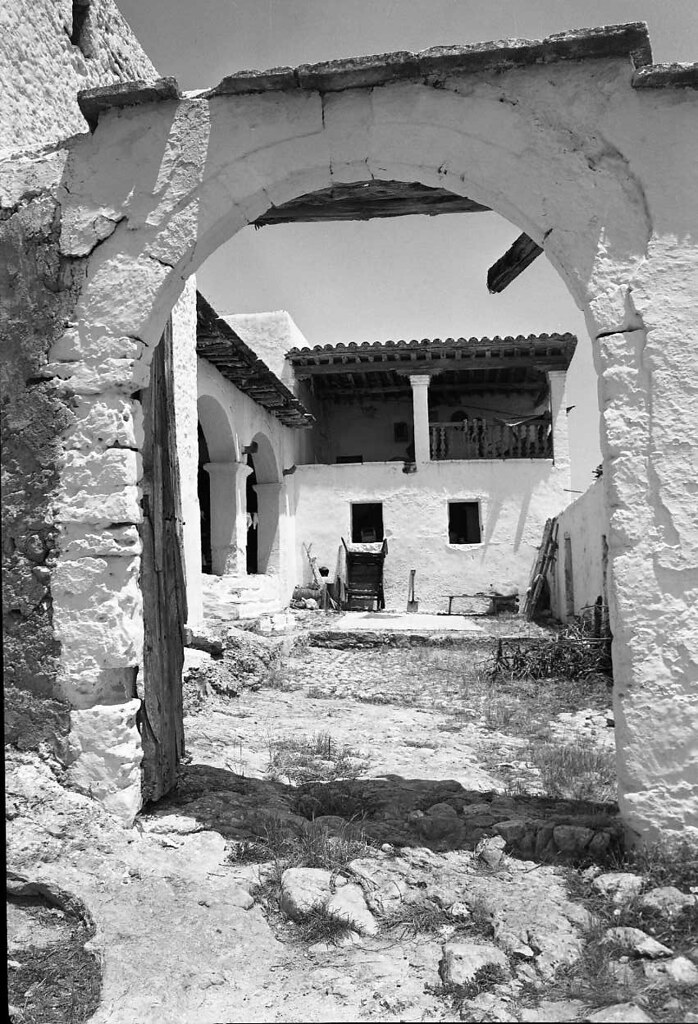GET IBIZA VILLAS IN YOUR INBOX? SUBSCRIBE
GET THE LATEST IBIZA NEWS IN YOUR INBOX SUBSCRIBE

The beginnings of settled communities are coeval with the development of agriculture. This occurred during the Neolithic phase of human cultural evolution. Architecture in the sense of permanent structures is, of course, also coeval with the advent of settled communities. The first houses seem to have been based on round huts with conical roofs. These are referred to as representative of the proto-neolithic era, when a semi nomadic existence prevailed with the beginnings of settled communities. Rectangukar building occurs with an increased sedentariness.
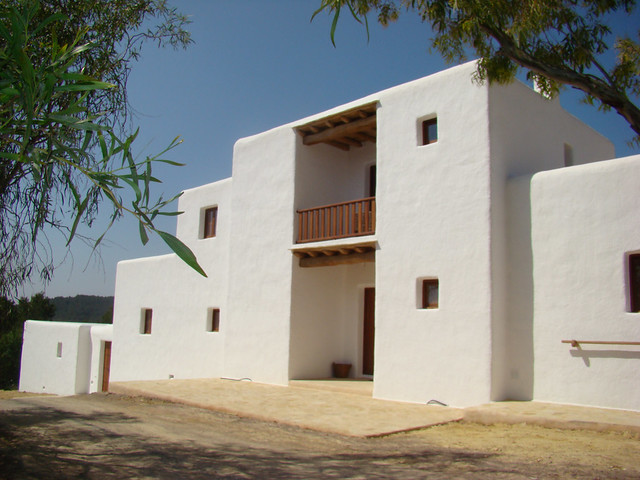
We are here interested in this stage which occurs in the Neolithic era in the Near East and in Central Asia. The classic examples of these developments are those of Jerichoin the 8th millennium BC and of Catal Huyuk and Hacilar in the 7th and 6th millennia BC.
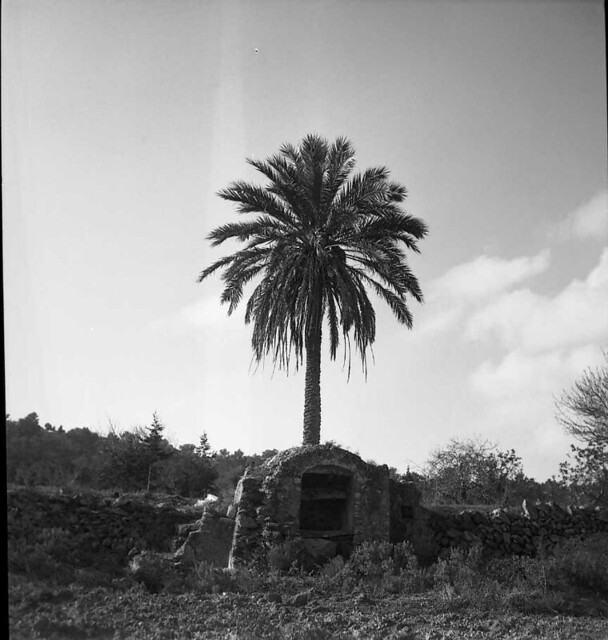
The characteristic building method which evolved was of stone of mud-brick load-bearing walls with a flat roof of wooden beams, covered with twigs or canes, and rendered waterproof.
The technologies of farming and building presumably took place together, as a single technology, as the groups of people were converted to an agricultural economy.
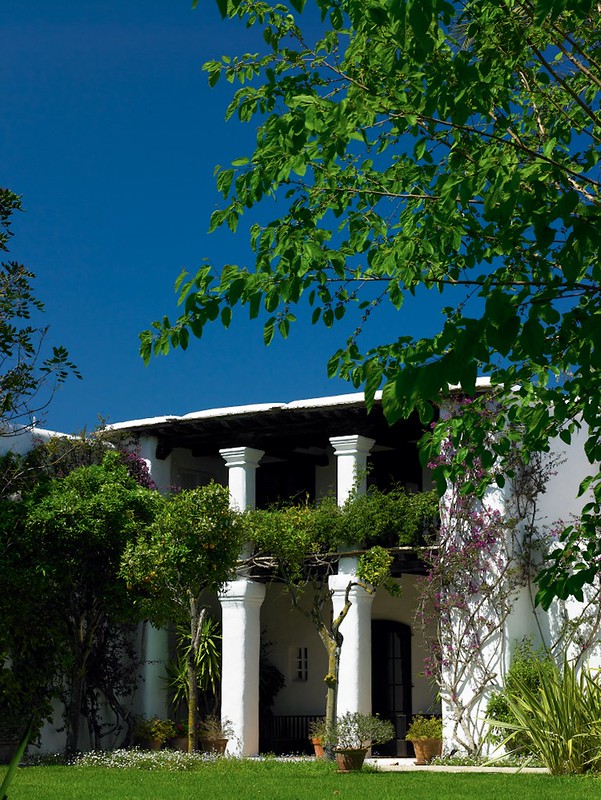
“The traditional building essentially conformed to the Bit-hilani house plan, consisting of a breitraum or broad room [porxo] that has an entrance on one long wall and a succession of rooms opening off the other three walls. The porxo was used as a living room and work place. Little chairs were lined up against the walls and a table set on one side. If needed, the table was moved to the centre of the room and chairs set around it. This gave the room adaptability for various activities.
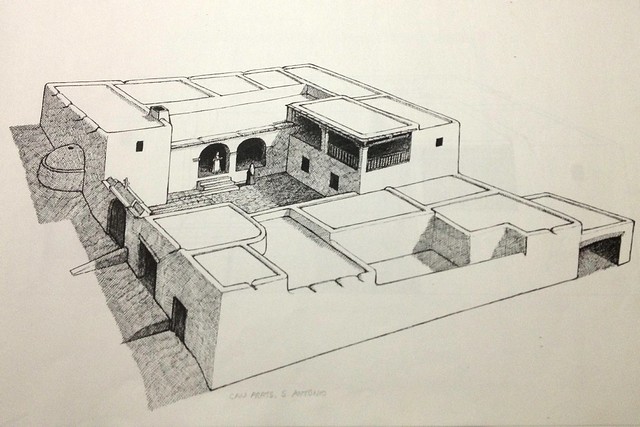
“Windows in ancient Ibicencan houses were very small and did not contain glass. They were not used primarily for light, but for air; light, and warmth generally came from the south-facing front door. Here you could see farmwomen shelling almonds, embroidering or spinning wool. The farms themselves differed from those on the other Balearic Islands, in that they were generally smallholdings. Although these were self-sufficient, the families on them relied on the help of their neighbours for the olive harvest, or on matanza day.
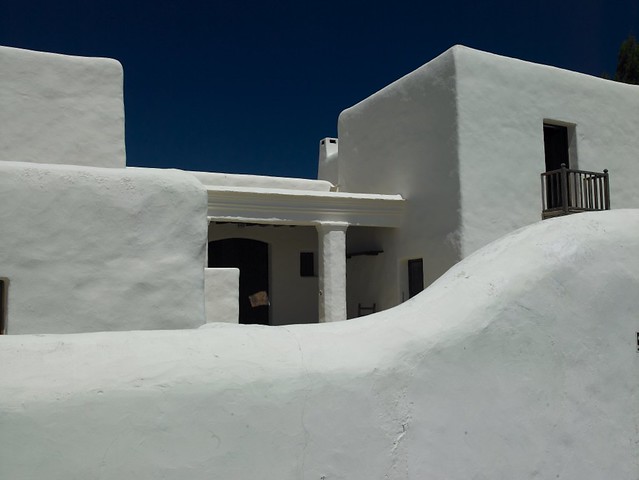
“These houses were built and rebuilt well into the mid-twentieth century, using the biblical ‘long cubit’ [approximately 52.5cm], a unit of measurement introduced along with the architecture by the Phoenicians. There is virtually no evidence of Hellenistic, Roman or Islamic influences of any importance in the basic design elements of a rural Ibicencan house.
“The cultural invasion of the island has changed the agricultural-based economy to one of tourism, making continuity with the past next to impossible. Basically, it has rendered many traditions irrelevant today.”
